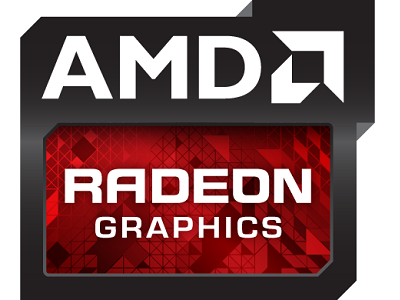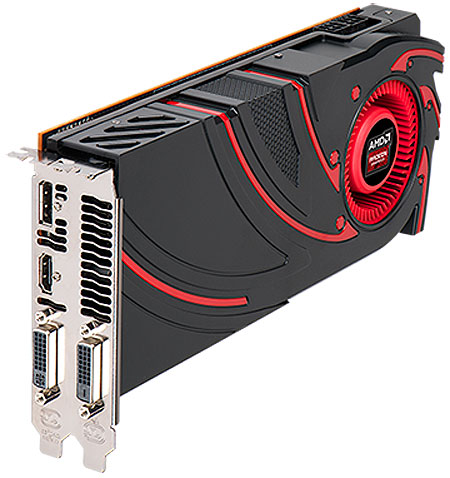AMD Announces OEM Radeon 300-Series Specifications And Availability
AMD revealed specifications and availability for its OEM line of Radeon 300-Series graphics cards, and they are all rebrands.
Just yesterday, during the three-hour-long Financial Analyst Day 2015 presentation, AMD revealed its new Zen CPU microarchitecture along with what we presumed was the new Radeon 300-series GPUs. At the time, however, the company revealed no exact specifications for these GPUs beyond the fact that the "next generation" would feature HBM memory, and that in 2016 we'd be seeing GPUs with the second generation HBM memory and manufactured with FinFET technology. However, it appears that AMD listed specifications for the OEM variants of the Radeon 300-series overnight.
Now, we must mention something. Yesterday, during the presentation, AMD did not specifically announce the Radeon 300-series, but we assumed that's what they were talking about. In light of the new information, however, it is possible that not all of the 300-Series GPUs have HBM memory, or that this quarter's GPUs with HBM memory won't be part of the 300-Series at all. We recognize these possibilities because the specifications for the GPUs listed on AMD's website clearly state that they come with GDDR5 memory, and the model numbers range up to the Radeon R9 380.
We've put all of the most important information from the OEM Rx-300 series in the table below.
| Header Cell - Column 0 | Shaders | Clock Speed | Memory | Dx12 Support |
|---|---|---|---|---|
| R9 380 | 1792 | Up to 918 MHz | Up to 4 GB | Yes |
| R9 370 | 1024 | Up to 975 MHz | 2 GB or 4 GB | Yes |
| R9 360 | 768 | Up to 1050 MHz | 2 GB | Yes |
| R7 350 | 384 | Up to 1050 MHz | 1 GB or 2 GB | Yes |
| R7 340 | 384 | Up to 780 MHz | Up to 4 GB | Yes |
| R5 340 | 320 | Up to 825 MHz | Up to 2 GB | Yes |
| R5 330 | 320 | Up to 855 MHz | Up to 2 GB | Yes |
From the looks of it, all of these cards are rebrands. They feature the same GPU cores as we've seen before, and they all have either GDDR5 memory or DDR3 memory for some lower-tier models. Placing the specs side-by-side, the R9 380 appears to take the R9 285's place, and oddly enough, the R9 370 appears to be a rebranded R7 265 with a slightly higher clock speed.
It must be stated that all of the GPUs in this series, so far, are OEM GPUs, meaning that they are not available as AIB retail boards. These GPUs are sold straight to system builders such as Dell or HP, and integrated into their desktops.
From here on out, we're not quite sure what will happen. With the top model being an R9 380, it is still possible that the new HBM-equipped GPUs will be tiered above those in the 300-series naming stack, or AMD may be birthing the 400-series nomenclature for the all-new graphics cards. Either way, systems with these OEM 300-Series GPUs should start shipping anytime. In fact, HP already announced its Envy system packing these GPUs earlier this week.
Follow Niels Broekhuijsen @NBroekhuijsen. Follow us @tomshardware, on Facebook and on Google+.
Get Tom's Hardware's best news and in-depth reviews, straight to your inbox.
Niels Broekhuijsen is a Contributing Writer for Tom's Hardware US. He reviews cases, water cooling and pc builds.
-
InvalidError Great, another round of model renumbering, as if the 2xx series did not have enough re-brands already.Reply -
Larry Litmanen I'd love to see Samsung buy out AMD, pour more money into desktop CPUs and GPUs, combine mobile chips units.Reply
Imagine buying a CPU, GPU and SSD from one manufacturer and they are all optimized to work together. -
NubUser Só nothing new to ser but more wait, i hope cheaper peixes and lower power requirementsReply -
NubUser Só nothing new to ser but more wait, i hope cheaper peixes and lower power requirementsReply -
Calculatron I remember when the R9 285 came out, a lot of reviewer-sites were taking a look at the PCB, and noting that there was room for two more GB of VRAM. Some even went as far as to speculate about the distance the power plugs had allowed for future soon-to-be variants, like hopefully an R9 285X. Sapphire's R9 285 manual even mentioned an R9 285X, although that may have been a typo. So, seeing the R9 380 with "up to 4gb of RAM" isn't surprising, especially considering the lack-luster release of the R9 285. Almost all variants from the vendors used the same components (Elpida RAM, same VRM chip), with very few noteable exceptions. ASUS used their own VRM controller chip, and both MSI and ASUS included an additional phase. The best R9 285 design goes to Sapphire, with their ITX variant, since they used their own components, made an excellent cooler that also handled the VRM, and did this all within a tiny form factor.Reply
Anyway, I am not surprised that we see the R7 265 and R9 285 show up as rebrands. While they did not surprise us with performance boosts, they did bring a number of interesting features. As long as the price is right, I'll accept them as rebrands. -
JRA512 *sigh* Not suprised, just disappointed. I'll still wait till June-July to decide what to buy. Having said that I really dont feel like spending a higher dollar amount on "Newer" rebranded items. GTX 970 or a R9 290x will be good enough for what I do. The R9 390x, 980/Titan are way out of my price range.Reply -
Martell1977 I just hope this is due to impatient OEM's and not what the plan for the majority of the 3XX series. If they do all rebadges, except the top 2, like the 2XX series, this could be really bad for AMD.Reply -
crisan_tiberiu Lets face it, AMD cant win the battle on 2 fronts. AMD battles with the GIANT Intel on the x86 CPU market, and also with nVidia on the other front... I think AMD does a very good job imhh, given the conditions ^^. Face it, "it is all about the money"Reply


